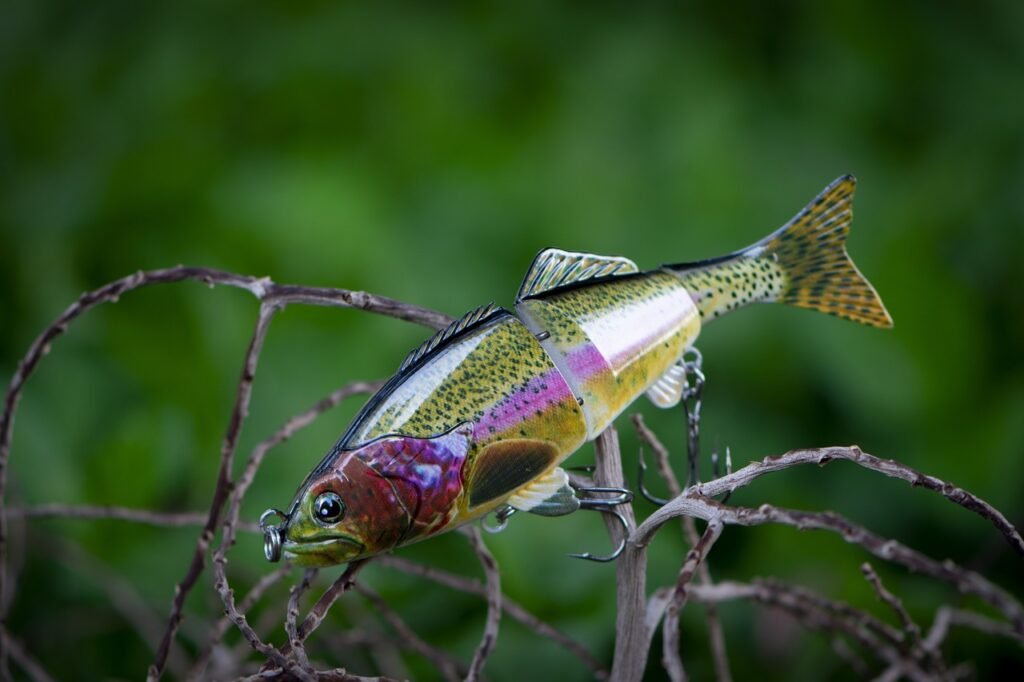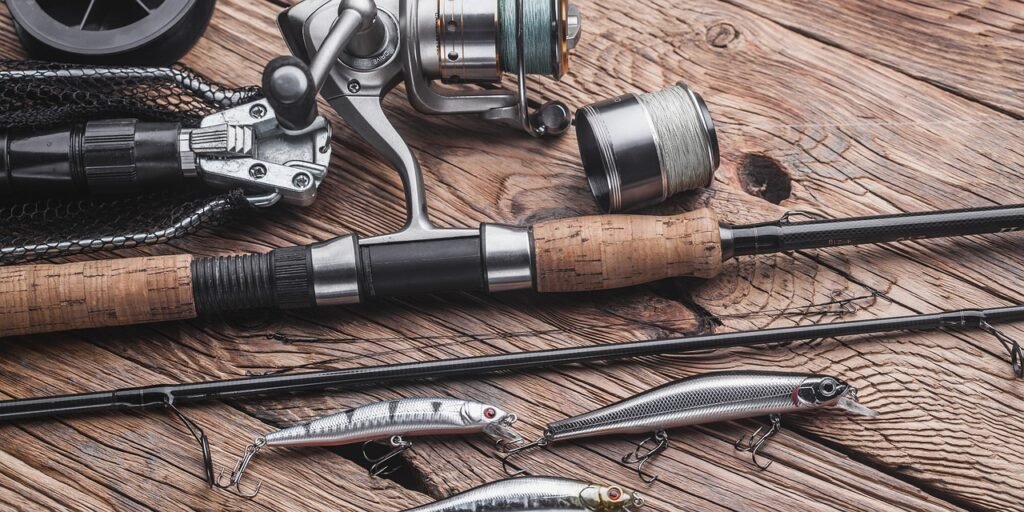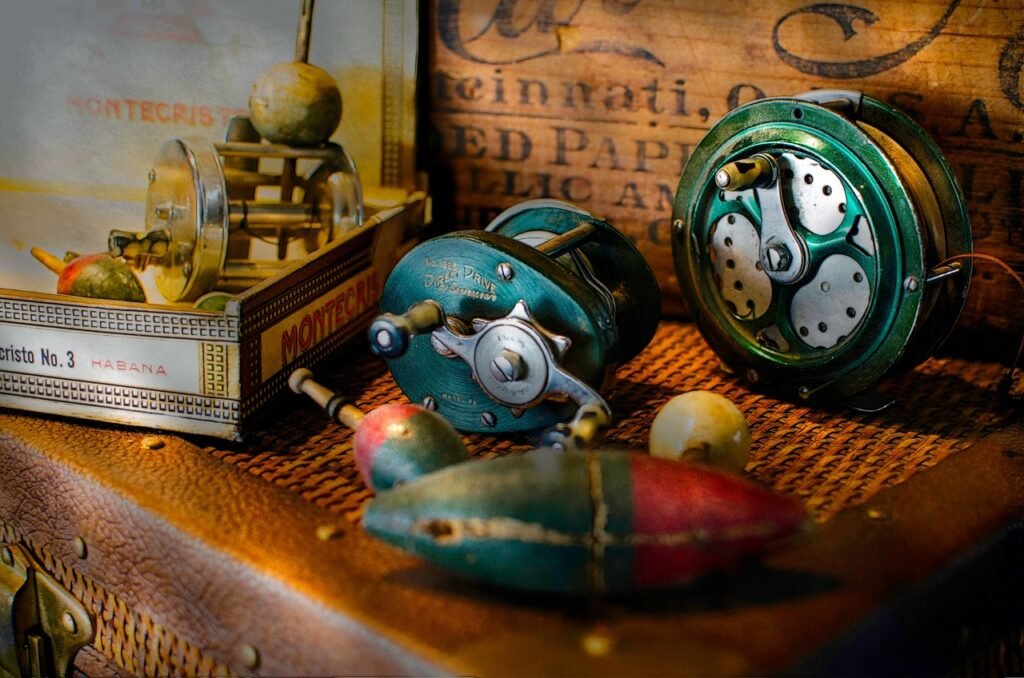Fishing is more than just casting a line into the water and hoping for the best. It’s an art form, a science, and sometimes even a bit of luck. One of the most debated topics among anglers is the role that color plays in the effectiveness of fishing lures. Does it make a difference? If so, how can you harness this knowledge to improve your chances of landing a big catch? Let’s dive into the colorful world of fishing lures and explore the science, history, and practical tips for selecting the right hue.
Why Is Color Important in Fishing Lure Effectiveness?
When you think about fishing, the first thing that might come to mind is the quiet solitude of sitting by a lake or river, waiting for a fish to bite. But have you ever stopped to think about why certain lures work better than others? Much of it boils down to color. Fish, like humans, react to different colors in various ways. The right color can attract fish, while the wrong one can send them swimming away.
The role of color in fishing lure effectiveness is not merely anecdotal. Numerous studies and experiments have shown that fish are attracted to certain colors depending on the environment, water clarity, and even the time of day. For instance, brighter colors like yellow and chartreuse often work well in murky waters, while natural colors like green and brown may be more effective in clear waters.
The Science Behind Color and Its Impact on Fish Behavior
Understanding the science behind the color preferences of fish can give you a significant edge. Fish have eyes adapted to their underwater environment, which means they see colors differently than we do. Light behaves differently in water than in air, so the colors that fish see can vary based on depth and water clarity.
Fish eyes contain cone cells, just like human eyes, which help them distinguish between different colors. However, the types of cone cells and their functionality can vary greatly among species. Some fish can see ultraviolet light, while others are more sensitive to red or blue light. This sensitivity can change based on the fish’s habitat and feeding habits.
For example, Rapala conducted a study where they discovered that bass are particularly attracted to colors in the red spectrum during spawning season because it mimics the appearance of prey like crayfish. Similarly, blue and silver lures often work well for species like tuna, which usually hunt in the open ocean where those colors blend with their prey.
A Historical Overview of Color Selection in Fishing Lures
The history of fishing lure colors is as rich and varied as the sport itself. Early anglers relied on natural materials and dyes to create lures, often using feathers, fur, and even carved wood painted with natural pigments. As technology and understanding of fish behavior improved, so did the sophistication of fishing lures.
In the mid-20th century, companies like Mepps and Heddon began experimenting with synthetic materials and more vibrant colors. These advancements allowed for a broader range of lures designed to target specific species and conditions. By the 1980s and 1990s, companies like Berkley and Strike King were producing highly specialized lures with a focus on color accuracy and durability.
What Are Popular Theories on Color Preferences in Different Water and Weather Conditions?
One of the most common questions anglers ask is: “What color should I use today?” The answer often depends on a combination of factors, including water clarity, weather conditions, and even the time of year. Several popular theories can guide your color selection.
Water Clarity
In clear water, natural and subdued colors like green, brown, and silver tend to be more effective. These colors mimic the natural prey that fish are accustomed to seeing. On the other hand, in murky or stained water, brighter colors like chartreuse, fluorescent orange, and even pink can be more effective. These colors stand out better in low visibility conditions, making it easier for fish to spot your lure.
Weather Conditions
Weather plays a crucial role in how fish perceive colors. On bright, sunny days, natural colors often work better because they blend in with the surroundings. Conversely, on cloudy or overcast days, brighter colors can provide the contrast needed to attract fish. Zoom Bait Company offers a range of soft plastic lures in various colors designed to match different weather conditions, making it easier for anglers to choose the right one.
Time of Year
Seasonal changes can also affect color preferences. During spawning season, many fish are more aggressive and may respond better to bright, flashy colors. In contrast, during the colder months, fish are often less active and may be more attracted to subdued, natural colors that mimic their typical prey.
Case Studies and Experiments on the Effectiveness of Specific Lure Colors
To truly understand the impact of color on fishing lure effectiveness, let’s look at some case studies and experiments that have been conducted over the years.
Case Study: Bass Fishing in Murky Waters
In a comprehensive study conducted by Berkley, researchers set out to test the effectiveness of various colored lures specifically designed for murky water conditions. The study was carried out over several weeks in multiple locations known for their low-visibility waters. Researchers used a variety of lures in different colors, including natural hues and bright, fluorescent shades. They meticulously recorded the number of strikes and catches for each lure color. The findings were quite revealing: lures in bright colors like chartreuse and fluorescent orange significantly outperformed those in more subdued, natural colors. The bright colors stood out more prominently in the low-visibility environment, making it easier for the bass to locate and strike the lures. This insight has significant implications for anglers looking to increase their success rates in similar conditions.
Experiment: Trout Fishing in Clear Streams
In a parallel experiment, researchers from Rapala shifted their focus to trout fishing in clear streams, an entirely different fishing environment. This study involved experienced anglers who were provided with a variety of lures in both natural and bright colors. The natural-colored lures included shades of brown, green, and silver, closely resembling the local baitfish and insects that trout naturally prey upon. The bright-colored lures, on the other hand, included colors such as red, yellow, and neon green. Over the course of the experiment, which spanned several months and included diverse stream environments, the results consistently showed that natural-colored lures were much more effective than their brightly colored counterparts. The natural hues blended seamlessly with the surroundings, making them more attractive to trout and leading to a significantly higher catch rate. This experiment underscores the importance of matching lure color to the fishing environment for optimal results.
Practical Tips for Selecting the Right Color for Various Fishing Scenarios
Choosing the right color for your fishing lure can be a daunting task, but these practical tips can help simplify the process.
Tip #1: Match the Hatch
One of the most effective strategies is to match the color of your lure to the natural prey available in the area. If you’re fishing in a lake where the primary prey is small bluegills, using a lure in shades of blue and green can be highly effective.
Tip #2: Consider the Environment
Always take into account the water clarity and weather conditions. As mentioned earlier, brighter colors tend to work better in murky water, while natural colors are more effective in clear water. Similarly, adjust your color choice based on the weather – brighter colors for overcast days and natural colors for sunny days.
Tip #3: Use Technology to Your Advantage
Modern technology has made it easier than ever to select the right lure color. Apps like Fishbrain and devices like the Deeper Smart Sonar can provide real-time data on water conditions and fish behavior, helping you make an informed decision.
Highlighting the Top 5 Most Effective Lure Colors for General Fishing Conditions
Choosing the right lure color can significantly enhance your fishing success. While the best color choice can vary depending on specific conditions, certain colors have been consistently proven to be effective across a wide range of scenarios. Here are the top 5 most effective lure colors and why they work so well:
- Chartreuse: Ideal for murky waters and overcast days, chartreuse is a bright, eye-catching color that many fish find irresistible. Its high visibility cuts through cloudy water, making it easier for fish to spot. Anglers often rely on chartreuse when fishing in stained or muddy water conditions.
- Silver: Mimicking the scales of many baitfish, silver is effective in clear water and bright conditions. This color reflects light, creating a flash that can attract fish from a distance. It’s particularly useful in sunny weather or in waters where fish rely heavily on sight to locate their prey.
- Green Pumpkin: A versatile color that works well in various water conditions, green pumpkin is especially effective for bass fishing. Its natural, subdued hue mimics the color of many aquatic creatures, making it a reliable choice when fish are feeding on a wide array of prey. This color is especially popular in lakes and rivers with moderate clarity.
- Black: Surprisingly effective, black lures create a strong silhouette that fish can easily see, making them ideal for low-light conditions such as dawn, dusk, and nighttime fishing. The stark contrast of black makes it stand out against any background, helping fish to detect it from far away. This color is also effective in heavily vegetated environments where visibility is limited.
- Red: Often associated with injured prey, red can provoke aggressive strikes and is particularly effective during the spawning season. The color red can imitate blood or gills on a wounded fish, triggering a predatory response from game fish. Anglers often use red lures in the spring when fish are more aggressive and territorial.
By understanding the strengths of these lure colors, anglers can make more informed choices that cater to various fishing environments and conditions, ultimately improving their chances of a successful catch. Whether you are a seasoned fisherman or a beginner, incorporating these colors into your tackle box can enhance your fishing experience.
Conclusion and Future Trends in Fishing Lure Color Selection
As we look to the future, the role of color in fishing lure effectiveness will continue to evolve. Advances in technology, such as AI and machine learning, are beginning to play a role in understanding fish behavior and preferences. Companies like Garmin and Lowrance are already incorporating advanced imaging and data analytics into their fishing equipment, paving the way for even more sophisticated color selection tools. In conclusion, understanding the role of color in fishing lure effectiveness can significantly enhance your fishing experience. By considering factors like water clarity, weather conditions, and fish behavior, you can make more informed decisions and increase your chances of success. So next time you’re gearing up for a fishing trip, remember these tips and give your lure selection the attention it deserves. Happy fishing!




Sarıyer su kaçağı tespiti Terastaki su sızıntısının kaynağını bulmak için termal kamera kullandılar. İzolasyona zarar vermeden tamir ettiler. Orhan F. http://theanchorandcompass.com/author/kacak/
Zümrütevler su kaçak tespiti Zeytinburnu’nda su kaçağı tespiti için çok iyi bir ekip. Sorunumuzu hemen çözdüler. https://ready.epizy.com/read-blog/175
Bulgurlu su kaçağı tespiti Bayrampaşa su kaçağı tespiti: Bayrampaşa’da su kaçakları için garantili hizmet. https://appsupportlocal.com/read-blog/5660
Köpek Sahiplendirme Portalı Adresleri
Özellikle Efeler’deki eğitim, sağlık ve kamu hizmetleriyle ilgili güncel haberleri https://haberinolsunaydin.com/ sayesinde öğreniyorum. Sitenin özgün ve detaylı içerikleriyle Efeler hakkında her türlü bilgiye erişmek mümkün.
Rothenberger su kaçağı cihazı Testo termal kamera ile su kaçağı buldular, Üsküdar’da işlem çok hızlı ve kesin sonuç verdi. https://study-routes.com/2024/01/23/uskudarda-su-kacagi-tespiti-2/
Şişli su kaçak tespiti Bulgurlu su kaçağı tespiti: Bulgurlu’da su kaçağına anında müdahale. https://sociol.co/read-blog/7879
Best time to visit Cappadocia Aisha M. ★★★★★ Cultural immersion exceeded expectations! Learned pottery in Avanos using ancient techniques, then dined with a local family. Unforgettable! https://www.supers3.com/read-blog/11654
Istanbul Maritime Museum tour Guides are friendly and knowledgeable. https://watchxxxfree.club/?p=87601
Istanbul Painting and Sculpture Museum tour Istanbul tours are professional and reliable. https://evolvff.com/?p=3710
Bosphorus dinner cruise Everything was well organized and on time. https://classyhubindia.com/?p=4919
Turkey vacation packages Caleb P. – Güney Afrika https://ordinet.in/?p=7104
Antalya tours Turkey Turkey tour packages are comprehensive. Everything from accommodation to meals was top quality. https://iramawear.com/?p=5627
Göztepe su kaçağı tespiti Esenler’de su kaçağı tespiti yaptırdım, başarılı bir sonuç aldım. Kesinlikle tavsiye ediyorum. https://share.google/PU5VPospAdoIsYzq3
I like this post, enjoyed this one thanks for putting up. “No man is wise enough by himself.” by Titus Maccius Plautus.